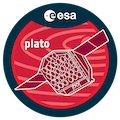Conveners
Relevant Stellar Science
- Haile Rauer
- Stephane Udry
Over the past two decades, an extraordinary revolution has ensued in our understanding of planetary systems beyond our own, driven largely by the transit missions Kepler and TESS - and soon to be with PLATO. Because the transiting missions have relatively poor spatial resolution, high resolution imaging has become standard practice in the vetting of planetary candidates as the community works...
The installation in 2012 of the high-resolution, ultra-stable spectrograph HARPS-N at the Telescopio Nazionale Galileo has represented a pivotal point for the mass determination of super-Earths and mini-Neptunes from the Northern Hemisphere. In synergy with Kepler, TESS and CHEOPS space missions, the HARPS-N Collaboration has provided accurate densities for over 50 transiting small planets and...
Earth-sized extrasolar planets orbiting in the habitable zones of solar-like stars are prime targets to look for evidence supporting the existence of life on other planets in the Universe. However, until now neither radial velocity nor transit photometry techniques were precise enough to detect and characterise a potential signal stemming from an Earth-twin. With the launch of the PLATO...
The detection of exoplanets rely heavily on space-based transit surveys such as Kepler, TESS and PLATO. In these surveys, detecting and characterising small planets pose challenges due to their low signal-to-noise ratio (SNR). Traditional methods, such as the BLS, exploit the periodic nature of orbits to enhance the SNR. But these methods are fundamentally limited when gravitational...
Space-based photometry allows observing activity-induced brightness modulations at the surface of solar-type and low-mass stars, opening the door to surface rotation measurements and activity monitoring in such targets. The PLATO stellar analysis pipeline will provide such measurements for as many targets as possible, including exoplanet host-stars for which they will be important inputs to...
The GAIA space mission has revolutionized our understanding of the Milky Way, offering an unparalleled data set for over 1 billion stars and celestial bodies, thereby setting a new benchmark for precision in stellar and exoplanetary science. This advancement is particularly synergistic with the goals of the PLATO (PLAnetary Transits and Oscillations of stars) mission, which aims to discover...

